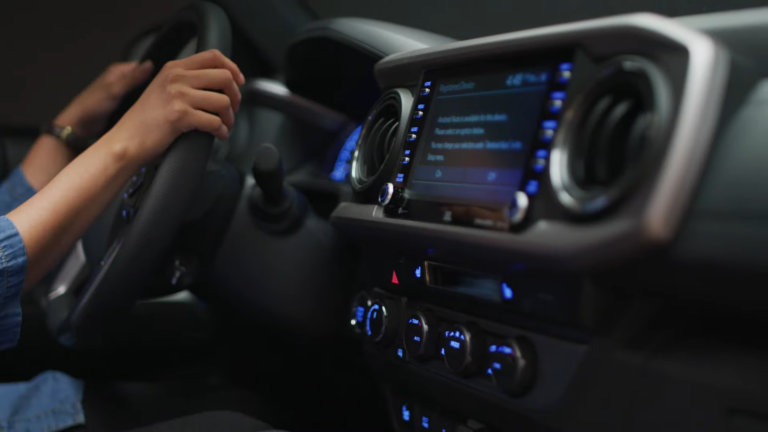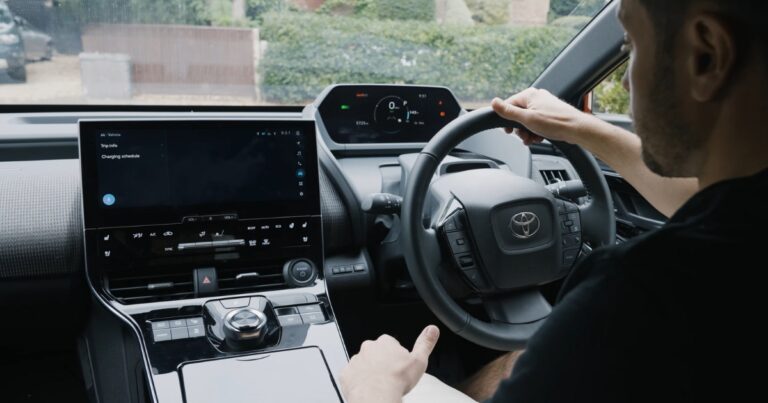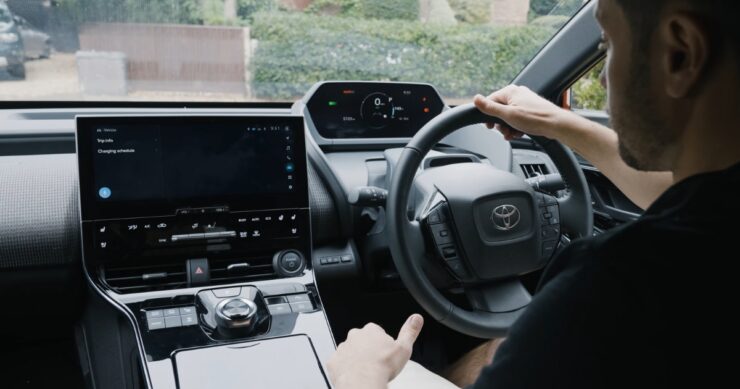The automotive industry is undergoing a major transformation, and innovative software solutions are at the forefront. For Toyota, a pioneer and leader in the auto industry, developing cutting-edge software is essential to remain competitive.
Vehicles have evolved into sophisticated computers on wheels, with complex systems controlled by millions of lines of code. Software now handles critical functions like engine timing, braking, navigation, and infotainment. As cars become more connected, electric, and autonomous, there is a growing need for advanced automotive software.
Toyota has long been known for its quality, reliability and safety. Maintaining this reputation in a software-defined future requires continuous software innovation. Software glitches that cause vehicle breakdowns or open security vulnerabilities can seriously damage Toyota’s brand.
This makes it crucial for Toyota to implement novel software solutions that enhance performance, add exciting new features, and prevent problems. Partnering with leading software companies allows Toyota to incorporate artificial intelligence, cloud computing, and other innovations into their vehicles.
With intelligent and reliable software, Toyota can deliver an excellent driving experience to customers and position itself at the forefront of the future of mobility. This paper examines key trends, successes, and challenges in developing innovative automotive software for Toyota vehicles.
Toyota’s Automotive Software Needs

Toyota vehicles rely on increasingly complex software systems to enable key capabilities and enhance the overall driving experience. Some of the major automotive software needs for Toyota include:
- Autonomous Driving Software: Developing robust software for automated driving systems is crucial for Toyota’s future autonomous vehicles. This involves sensor fusion, computer vision, AI algorithms, and advanced navigation systems to enable self-driving capabilities. Toyota is investing heavily in R&D to build safe and reliable automation software. For more information on our advancements in autonomous driving technology, visit website of our partner.
- Infotainment Systems: Modern Toyota vehicles are equipped with sophisticated infotainment software that powers touchscreens, voice commands, music/media applications, navigation systems, and smartphone connectivity features. User-friendly HMI interfaces and integration of apps and services is a priority.
- Diagnostics and Vehicle Health Management: Toyota employs diagnostic software to monitor vehicle health in real-time, detect problems/faults, and support preventative maintenance. Advanced telematics systems also enable OTA software updates to continuously improve diagnostics capabilities.
- Vehicle-to-Everything (V2X) Communication: V2X software facilitates communication between vehicles and infrastructure like traffic signals to improve road safety. Toyota is developing V2X capabilities for applications like collision warning systems.
- Security: With increasing software complexity, security against cyber threats is paramount. Toyota employs encryption, data protection, access controls, and over-the-air security patches to harden software systems against hacking attempts.
Overall, Toyota aims to be an industry leader in automotive software innovation and integration to deliver the next generation of safe, secure, and connected vehicles. The company is ramping up in-house software expertise and partnering with tech firms to transform vehicles into sophisticated computers on wheels.
6 Challenges in Automotive Software
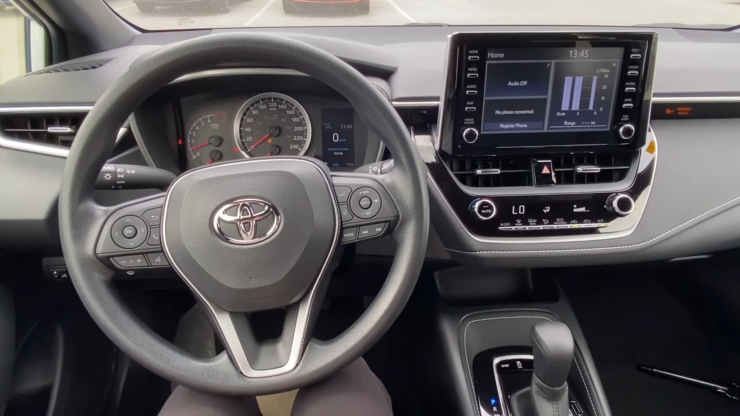
The automotive industry is undergoing a major transformation driven by software innovation. However, developing advanced software solutions for vehicles also poses some unique challenges.
1. Complexity
Modern vehicles contain over 100 million lines of code across 70-100 electronic control units (ECUs). This complexity makes it difficult to integrate new software and functionality. There are often issues with interoperability between components and subsystems. Software must be rigorously tested across various ECUs and the entire vehicle architecture.
2. Connectivity
Connectivity is both an opportunity and a challenge. Vehicles are increasingly connected to external networks, other vehicles, smartphones, and infrastructure. However, greater connectivity also increases vulnerabilities to cyber-attacks and hacking. Security is critical, as any breach could endanger passenger safety. Connectivity also generates huge amounts of data that must be managed.
3. Agile Updates
Unlike consumer electronics, automotive software needs to remain reliable for 10-15 years. Yet there is pressure to rapidly update functionality and add new capabilities. This requires an agile approach of delivering updates while ensuring safety, security, and stability. Over-the-air software updates are becoming more common.
4. Customization
Customers expect a high degree of personalization and custom features. This requires automotive software platforms to be highly flexible and configurable. Software must interface with various third-party applications and services. Achieving this level of customization while maintaining reliability and performance is difficult.
5. Safety and Security
Safety is the top priority for any automotive system. Software must undergo rigorous testing and validation across thousands of scenarios. Any defects or vulnerabilities could endanger human lives. Security is also paramount to prevent external attacks. Automotive software must adhere to strict quality standards and regulations related to functional safety.
6. Legacy Systems
Many existing automotive software systems reflect decades-old architectures. Integrating modern solutions with legacy systems and hardware is challenging. A long technology refresh cycle makes it difficult to retire legacy environments. Software platforms must be backward compatible and bridge old and new systems.
Importance of Innovation in Automotive Software
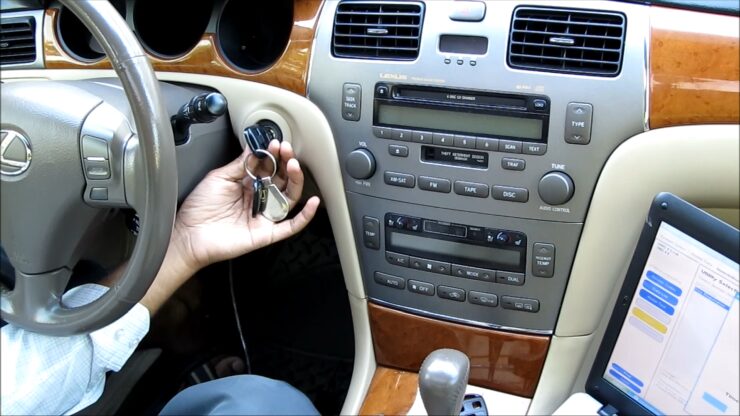
Innovation in automotive software is critical for Toyota in order to reduce costs, increase efficiency, and provide an enhanced user experience. By utilizing the latest software developments and technologies, Toyota can optimize performance across its vehicle lines and remain competitive in the automotive industry.
Some key ways that innovative automotive software benefits Toyota include:
Reducing Costs
- New software allows for more efficient code that requires less storage space and computing power. This translates to lower hardware costs.
- Software innovation enables remote updates and fixes, reducing reliance on dealer visits for maintenance.
- Advanced algorithms and AI reduce development and testing time for new software features.
Increasing Efficiency
- Innovative software allows for higher automation and integration in vehicles, optimizing energy usage and drivetrain performance.
- Real-time data analytics help detect problems early and streamline maintenance needs.
- Vehicles can be built with fewer software components through consolidation and efficiency improvements.
Enhancing User Experience
- Modern interfaces and voice recognition create more intuitive, user-friendly in-vehicle environments.
- Connected services powered by updated software provide access to navigation, entertainment and other apps.
- New cybersecurity software protects driver/passenger data and reduces risks.
- OTA (over-the-air) software updates add exciting new features and upgrades conveniently.
By continuously developing innovative automotive software solutions, Toyota can unlock performance improvements and cost savings while exceeding customer expectations. Software innovation is key to Toyota’s future competitiveness and success.
3 Emerging Trends in Automotive Software Development

The automotive industry is undergoing a major transformation driven by software innovation and new technologies like electrification, connectivity, and autonomous driving. Toyota has recognized the need to embrace software-focused development trends to remain competitive.
1. Agile Development
Agile development methodologies like Scrum and Kanban are gaining popularity in automotive software. These iterative approaches deliver software faster by breaking projects into small increments and emphasizing flexibility over rigid planning. Toyota is increasingly adopting agile principles to respond quicker to changing requirements and bring high-quality software to market faster.
2. DevOps Culture
Automakers like Toyota are also cultivating a DevOps culture that emphasizes collaboration between software developers and IT operations teams. With DevOps, the development and deployment cycles are integrated to enable continuous delivery of new software features. Adopting DevOps can help Toyota release updates more frequently and ensure reliability.
3. Leveraging Open Source
The automotive industry is moving towards open-source software platforms to reduce costs and benefit from collective innovation. Toyota relies on open-source code and has joined the Automotive Grade Linux project to customize open-source software for in-vehicle infotainment systems. Open source enables automakers to share development costs and accelerate innovation.
Partnerships and Collaboration
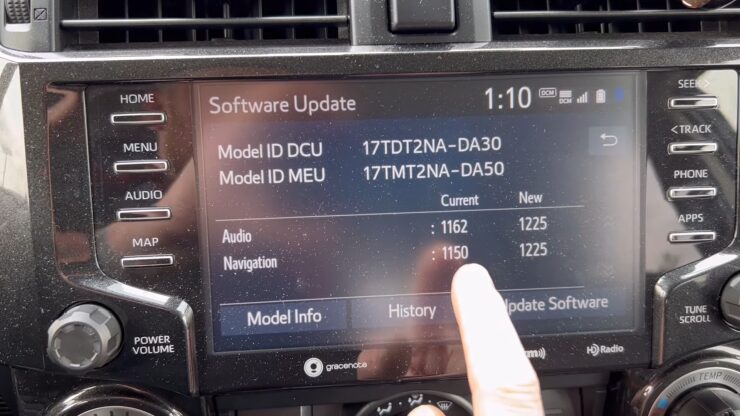
Working with Vendors
Partners with automotive software vendors to leverage their expertise in designing, developing and integrating complex systems. Key partnerships include companies like BlackBerry for security, Nvidia for AI compute platforms, and AWS for connectivity and cloud services. These vendors provide robust and scalable solutions that Toyota can build upon and customize for their needs.
Research Institutions
To tap into cutting-edge academic research, Toyota funds university research labs and partners with institutions working on autonomous driving, robotics, machine learning and other relevant fields. For example, Toyota has partnerships with MIT, Stanford, the University of Michigan and others to transfer research breakthroughs into automotive applications.
Consortiums
By joining industry consortiums focused on standardizing and advancing automotive technologies, Toyota participates in pre-competitive collaboration to tackle shared challenges. These include groups like the Autonomous Vehicle Computing Consortium (AVCC) and Automotive Edge Computing Consortium (AECC) which align on computing platforms for autonomous vehicles.
Partnerships across vendors, academia and industry groups provide Toyota with diverse capabilities, resources and innovations for integrating into their automotive software solutions. By leveraging collective expertise, Toyota aims to rapidly enhance their vehicles’ intelligent functionality.
Advanced Technology Integration
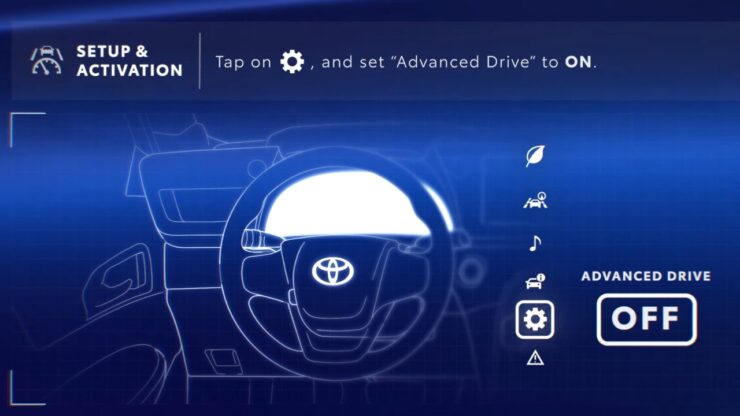
Toyota has been exploring ways to integrate advanced technologies like artificial intelligence (AI), machine learning (ML), cloud computing, and 5G connectivity into their automotive software solutions. These cutting-edge technologies offer exciting new capabilities that can enhance safety, efficiency, and the overall driving experience.
AI and ML allow vehicles to dynamically learn from data and experiences to improve automated driving systems. As Toyota collects more real-world driving data, their AI algorithms become better at predicting and reacting to different road conditions and events. This provides a smarter, more adaptive level of vehicle automation.
Cloud-based automotive software allows for continuous over-the-air updates to add new features and upgrades seamlessly. With cloud connectivity, issues can also be diagnosed and fixed remotely without needing to visit a service center. Toyota is developing more of its software infrastructure through the cloud for greater flexibility and responsiveness.
The ultra-fast speeds and massive connectivity promised by 5G networks will enable real-time communication between vehicles, transportation infrastructure, and cloud-based data centers. This allows Toyota vehicles to receive and analyze huge amounts of data on the fly, unlocking next-generation vehicular applications.
By thoughtfully integrating AI, ML, cloud computing, 5G and other emerging technologies, Toyota aims to create uniquely intelligent and connected driving experiences in their new vehicles. The automotive software side will be crucial to making these complex innovations work safely, securely, and reliably.
Future Prospects: Software Driving Innovation in Connected, Autonomous, Electric Vehicles
This brand has laid out an ambitious vision for the future of driving that relies heavily on software innovation. Key areas where software will enable transformation include:
- Autonomous Driving: Toyota is investing significantly in autonomous driving technology, aiming to develop Highway Teammate for production vehicles by 2025. This advanced driver assist system will enable hands-free driving on highways, powered by artificial intelligence and sensors. Toyota will need innovative software solutions for perception, planning, controls and overall integration of autonomous tech.
- Connected Mobility: Connectivity is a major focus, with goals to connect all vehicles by 2025 and have over-the-air software update capabilities. This will require robust software for V2X communication, data management, cybersecurity and OTA updates. Connectivity will also enable new mobility services and business models.
- Electric Vehicle Ecosystem: As Toyota transitions to electric, software will be critical in battery management, charging optimization, range prediction and integrating EVs into smart grids. Toyota aims to sell 3.5 million EVs annually by 2030, which will require a massive buildout of software capabilities.
Overall, automotive software will be one of the most important innovation areas for enabling Toyota’s vision. From augmented reality interfaces to cloud-driven services, software will shape future mobility experiences. With the right talent, partnerships and investment, Toyota can lead the industry in software-defined vehicles.
Addressing Concerns with Innovative Automotive Software
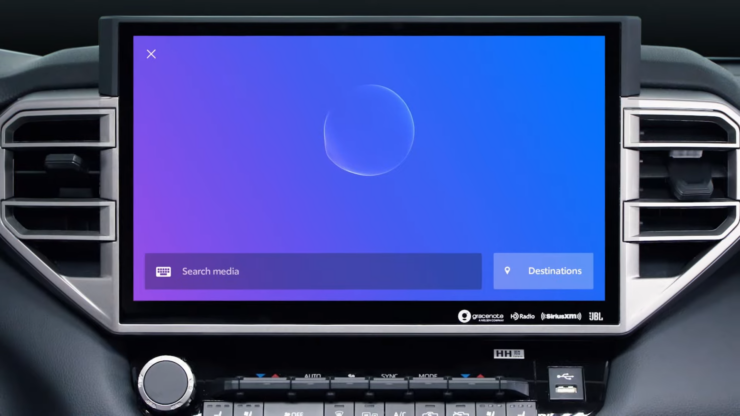
As Toyota implements more innovative software in their vehicles, valid concerns around security, safety, and regulations arise.
Security
With vehicles becoming increasingly connected and software-driven, security risks increase substantially. Sensitive driving data, vehicle controls, and personal information are vulnerable to cyber attacks if not properly secured.
Toyota prioritizes adding security layers into software, isolating critical systems, conducting penetration testing, and meeting cybersecurity standards. Security-by-design and regular security updates are crucial.
Safety
While innovative features improve the driving experience, safety must remain the top priority. Rigorously tests software for safety and reliability. Redundant systems provide fail-safes if components malfunction.
Driver monitoring systems ensure drivers remain focused on the road. Regular OTA updates enhance safety by fixing bugs and issues. Toyota collaborates closely with regulators to ensure adherence to safety standards.
Regulations
Regulations cover vehicle homologation, data privacy, emissions, safety ratings, and liability. Regional differences add complexity. Toyota participates in shaping reasonable, innovative regulations through industry groups. By working closely with regulators and policymakers, Toyota aims to balance innovation with responsible oversight.
With diligent focus on security, safety, and compliance, Toyota can implement cutting-edge software to enhance vehicles while earning customer trust. The concerns are valid but surmountable through industry collaboration and Toyota’s own rigorous internal processes.
Related Posts:
- Toyota's Creativity Overtakes Their Right-Hand Drive…
- Digital Drive: Navigating the Future of Toyota…
- 10 Best Tires For Toyota Avalon 2024 - Stable & Smooth Drive
- 10 Best Phone Holder for Prius 2024 - Drive Safely…
- Toyota 2.4 Engine Problems & Easy Solutions - Keep…
- Toyota 3.0 v6 Engine Problems & Possible Easy…

